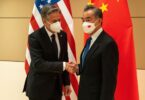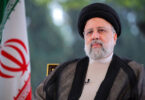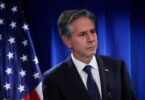Addressing a function at Jalpur Pirwala in South Punjab, Prime Minister Shahid Khaqan Abbasi made a dialogue offer to all political parties for achieving consensus on the issue of creating new provinces. He said that the people of Sarieki belt have always demonstrated their loyalty towards PML-(N). He reminded to the law makers, who have recently left the ruling party, that Punjab Assembly had passed two resolutions pertaining to the creation of South Punjab province and restoration of Bahawalpur province in May, 2012. Does the Prime Minister offer reflect a sense of realism or it is a political gimmicks? On the revolt of six MNAs and one MPA, the de Facto supremo of the ruling party, Maryam Nawaz in her tweet responded that no provisions exists for the creation of new provinces in the PML-N manifesto.
Over the past 10 years the demand for creating new provinces has gained momentum among the masses due to uneven socio-economic growth in the less developed areas because of lopsided development priorities of the governments. This demand seems to be reasonably enough considering their basic right to prosper. The lawmakers who parted ways with PML-N has complained that bulk of development funds are spent in Lahore at the cost of extremely backward regions of the province. Supporting their grievances by credible data of public expenditure, they argue that Rs. 162 billion are being spent on Lahore Orange Train project alone but the provincial government is not willing to spend even one fourth of this amount on South Punjab.
The extreme socio-economic disparities between the areas of Central and South Punjab is repeatedly being highlighted by a renowned journalist and TV anchor Rauf Kalusra in his columns and talk shows but the government did not budge an inch. This sense of trust deficit in the provincial set up has made the voice louder in the concerned public for new and small administrative units. A just principle in the form of a policy decision is the need of the hour taking on board all parties ensuring the division to satisfy the grievances of all stake holders.
There is no harm in creating more administrative units to promote the uplift of the people. It strengthens the federation by harmonious relationship between the center and the federating units. The United States with 50 administrative units, China with 34 provinces, Turkey with 81 provinces and India with 29 states and 7 Union territories have a strong and cordial federal structure. In India two Union territories Pudechry and the National Capital Territory of Delhi have elected legislatures. A number of times opposition parties have formed the government in this Capital territory. But it did not disturb the function of the Union Government in the federal Capital Delhi. These countries have been doing politically and economically well.
The political atmosphere of cooperation and accommodation during 2008-13 provided a rare opportunity for the creation of new administrative units in the country. The resolutions in Punjab Assembly submitted by provincial Law Minister Rana Sanullah for the creation South Punjab province and restoration of Bahawalpur province and their unanimous adoption by the provincial legislature fulfilled the basic constitutional requirement for this purpose. But as the leadership of both mainstream political parties, PPP and PML-N were not sincere in crating new administrative units therefore a constitutional amendment was not passed from the federal legislature. It vindicates the contention of Senator Barrister Farogh Naseem that he made in a TV current affairs program a few days ago that the leadership of PPP, PML-N and PTI are opposed to the creation of new provinces. If the analysis of this outstanding constitutional expert and parliamentarian is any guide then it can easily be presumed that the Prime Minister’s proposal for a dialogue to build consensus on South Punjab province is a political gimmick to garner the support of the people in South Punjab for his party to win the upcoming elections.






